Author: Pete
Location: Bay of Islands, New Zealand
You’d think things would’ve quieted down after the rally when all the rowdy sailers dispersed, but Opua was just starting up. We got a few things done on the boat that needed work, hoisted our newly refurbished jib, and started planning our time in New Zealand. So many bays and islands in the Bay of Islands (imagine that!); it’s almost impossible to see everything without staying a season up here.
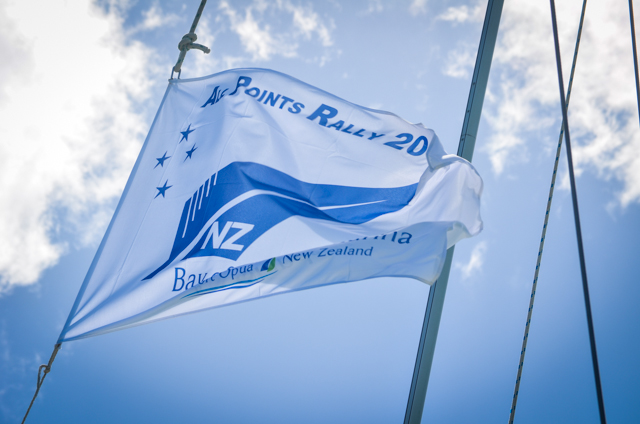
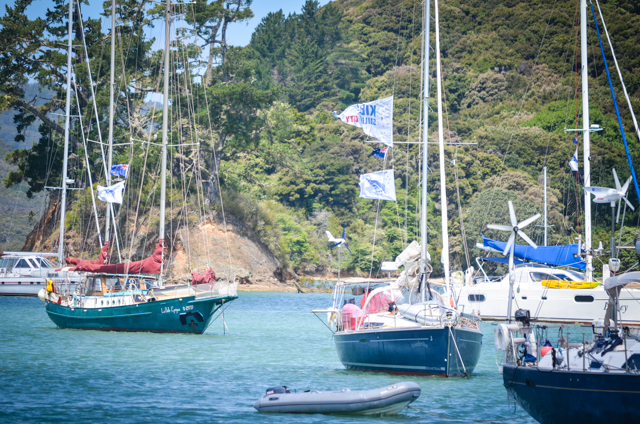
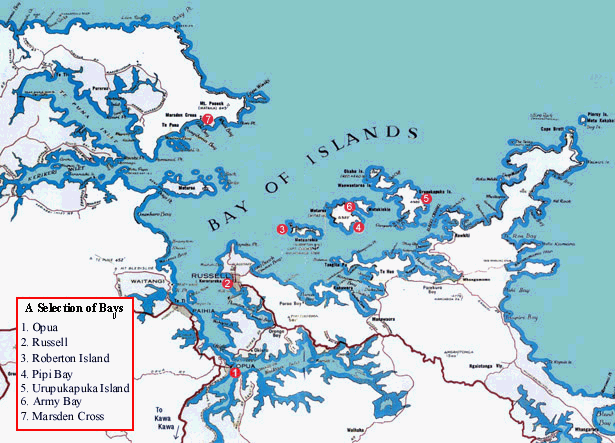
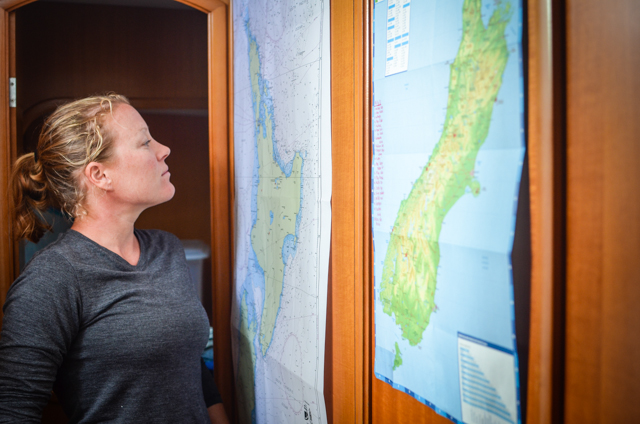
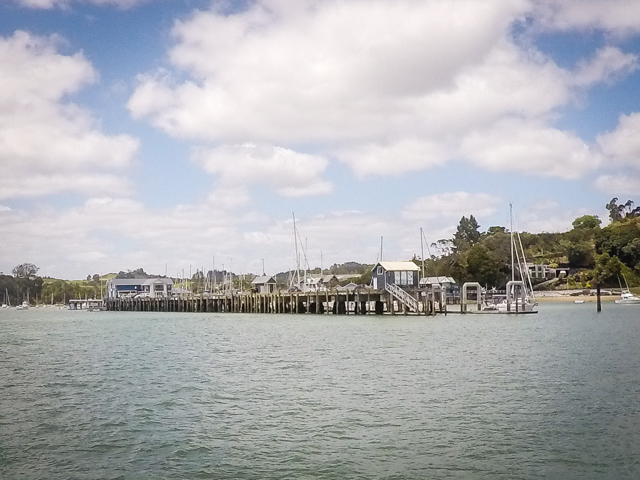
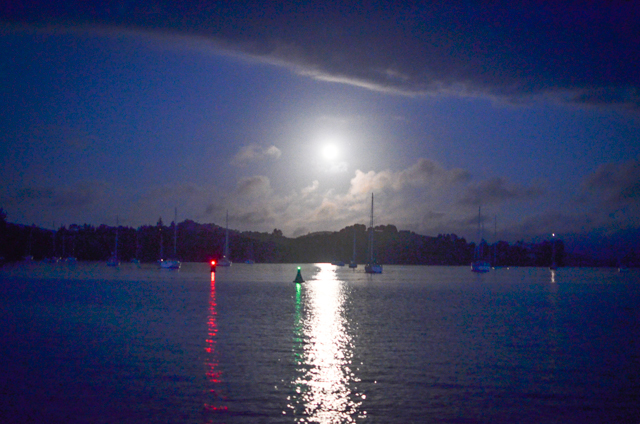
We hitched a ride to Kawakawa, a tiny town down the road from Opua. Apparently it was an old stomping ground of Austrian artist Friedensreich Hundertwasser, who lived in the tiny town for twenty-five years until his death in 2000. He must have had some bladder issues, as his lasting legacy to the community were some fabulous public toilets in his signature style. He even asked that the vegetation dug up for the construction be planted on the roof. Brilliantly eccentric mind indeed. After ‘visiting’ the landmark we nosed around Kawakawa and found almost nothing else there of interest. Makes me wonder what Hunderwasser saw in the village. Maybe just a blank canvas to work on. We were markedly less successful catching a ride back and ended up hot-footing the twelve kilometers back to Opua. It ended up being a lovely evening walk on a railroad grade turned bike path, which toddled over streams and through green pastured hills. Even made some friends with the locals.
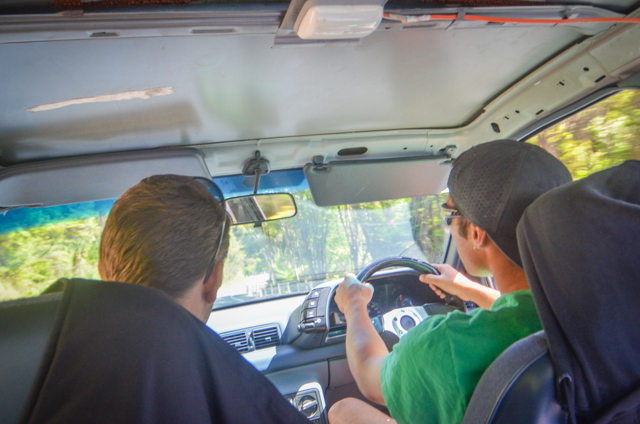
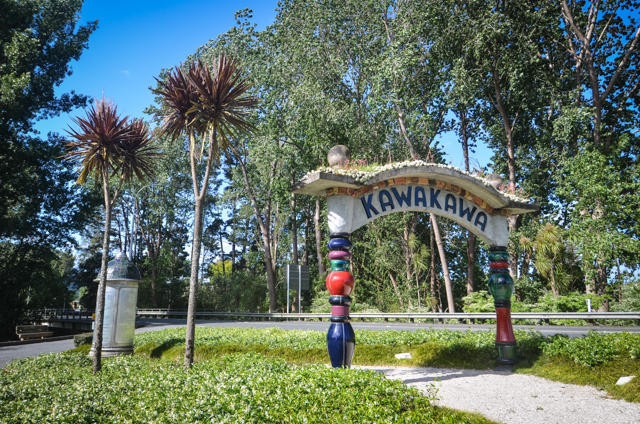
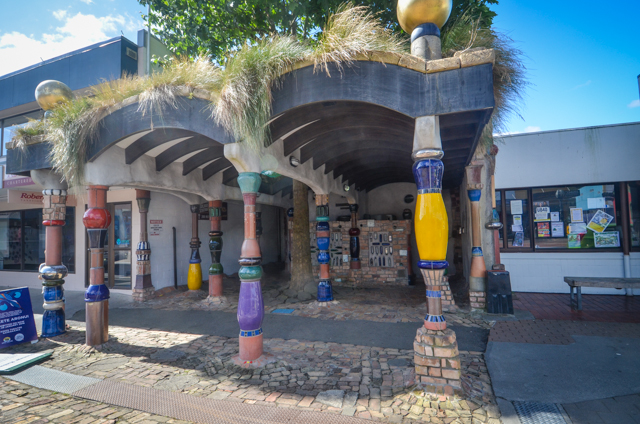
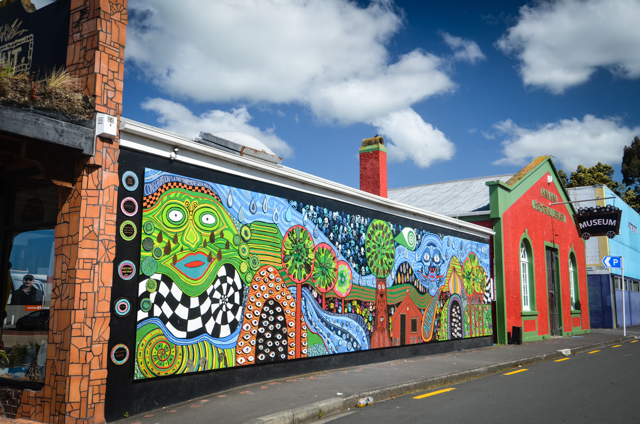
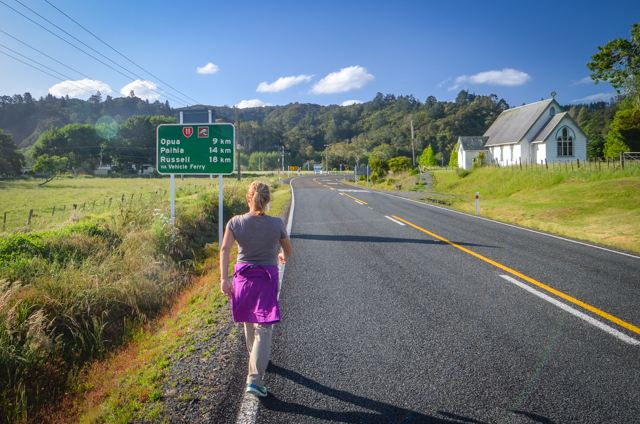
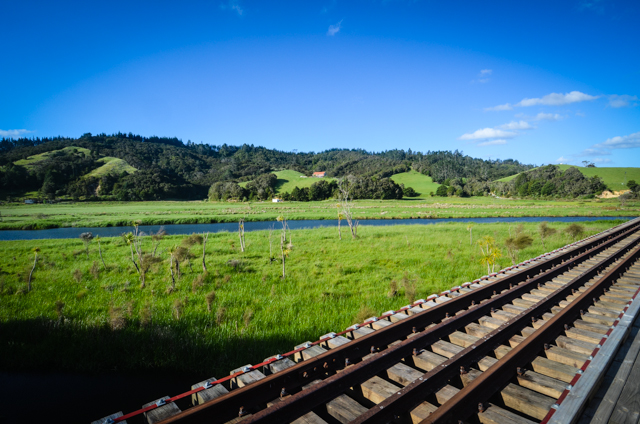
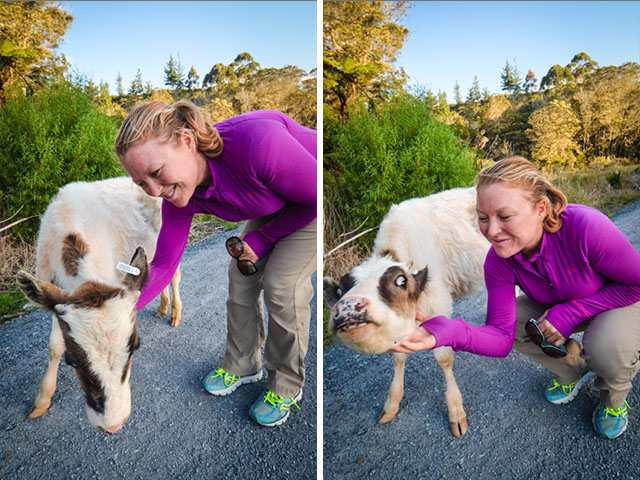
When all the necessary projects were done and we felt confident that neglecting the unnecessary ones wouldn’t endanger the boat, we pulled anchor and got out of dodge. Though we consulted weather predictions before we left, the three nautical-mile passage downriver to the next little town of Russel happily left little time to find ourselves besot by raging storms.

Russel, formerly Kororareka, has come full circle. The town’s original name in Maori means ‘Sweet Blue Penguin’, but received the handle “Hell Hole of the Pacific” in the 1800’s due to the debaucherous whalers who took leave and excessive liberties there while ashore. It’s ‘Russel’ now, and despite a touch of an identity crisis, it’s pretty much quaint and touristy, drawing crowds like zoo-going ice cream slurpers around the Sweet Blue Penguin exhibit. We even saw some penguins on the way which should’ve cued me in on the water temperature. But more about that later.
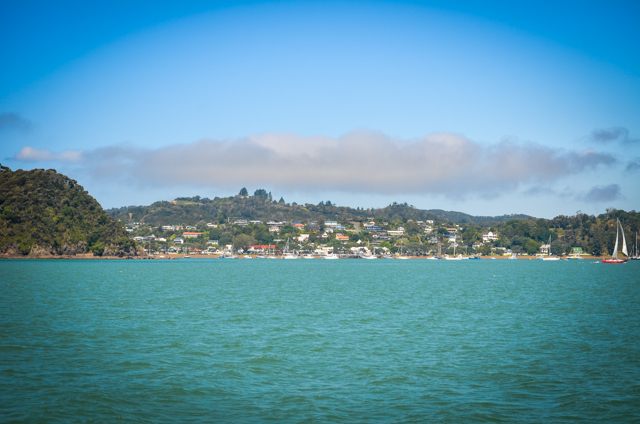
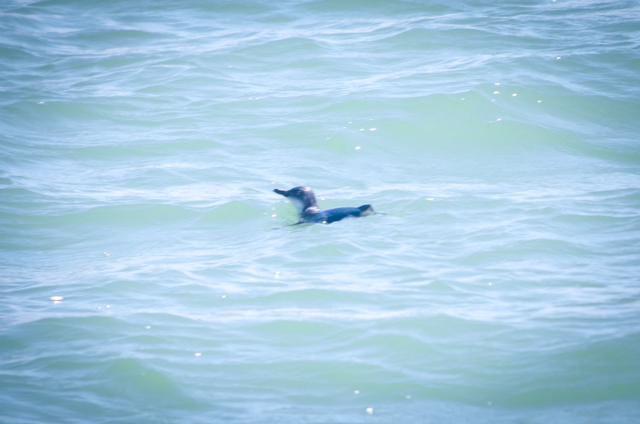
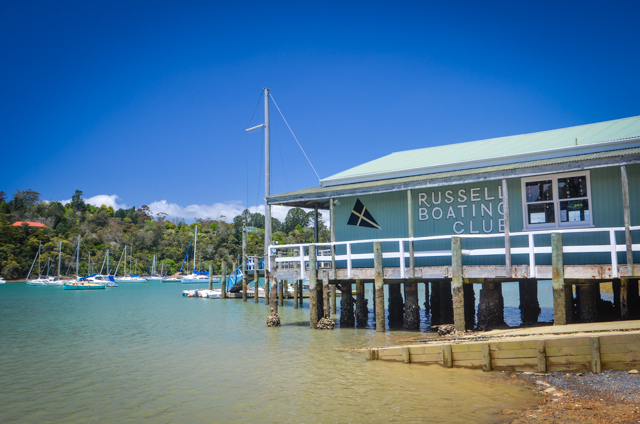

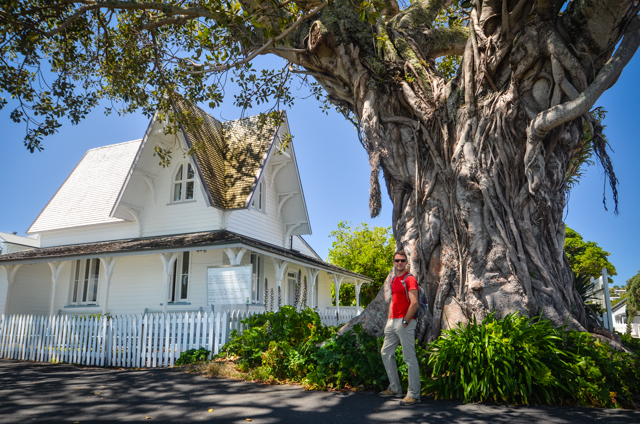
Thanksgiving stretched out for a few days like a fat and happy cat in front of a fire. Miranda and I made a small, pseudo-Thanksgiving dinner on Thursday and had a beautiful evening to ourselves on the boat watching the sunset. On Friday it was Thanksgiving back home, so we spend the day calling friends and family. Saturday we had plans with friends on a couple other boats to have a proper Thanksgiving dinner, so we descended with the crew from Georgia and Pau Hana on the unsuspecting Second Wind and feasted. Staggered around Russel for a scenic tour to walk off our distended bellies. Ended up laying in the grass.
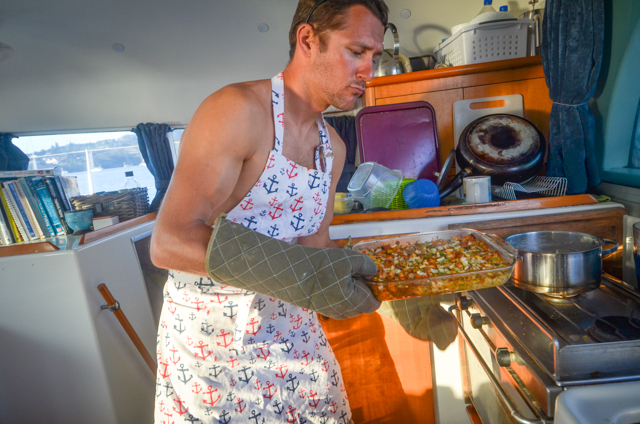
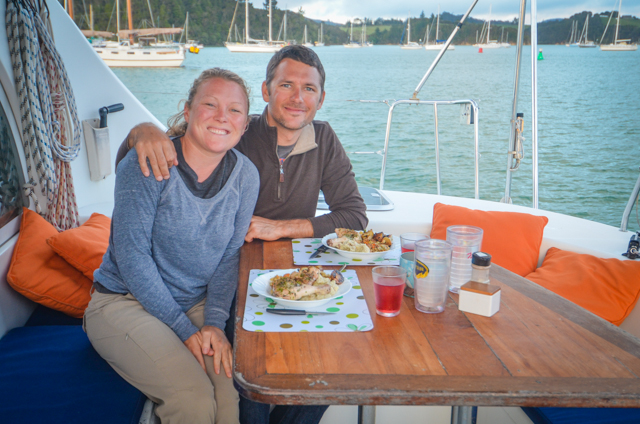
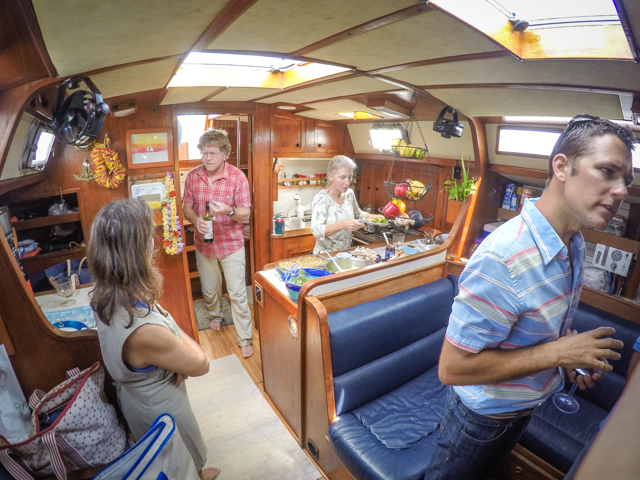
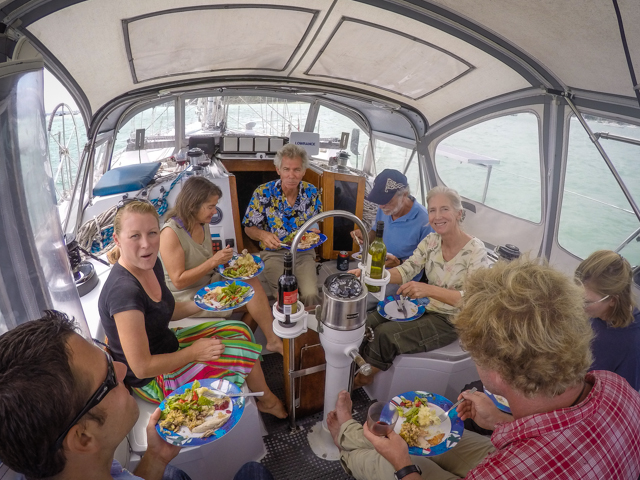

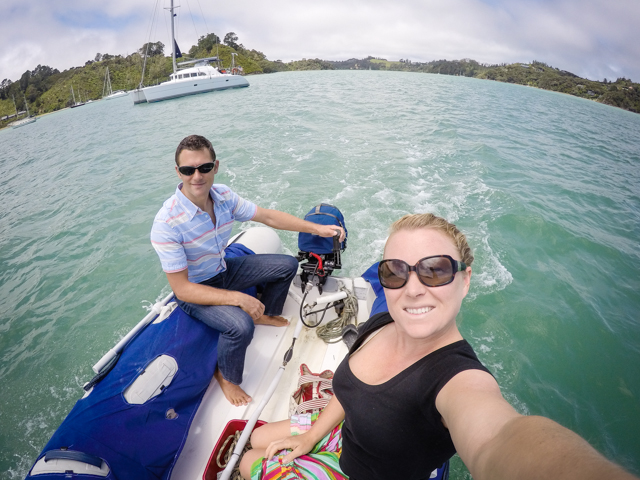
Motorsailed another three miles to Robertson Island, also called Motuarohia. I always wondered how anthropologists knew where and when early peoples moved around. Apparently New Zealand was populated not from Australia or even Fiji, but from Tahiti! The connection can be seen in the native languages which are pretty similar. The names of all the islands here start with ‘motu’, which means island in Maori and also in Tahitian! Same with va’a and waka which is canoe in Tahitian and Maori, respectively; the k and the glottal stop make the pronunciations very similar and both starting sound taking on more of an f-sound. Tracing these language similarities is one of the means for mapping the flow of human migration. Pretty neat. We hiked around Motuarohia, up to a pa site, a primitive fortification to ward of sieging neighbors. Not much was left of the site, but the view was excellent.
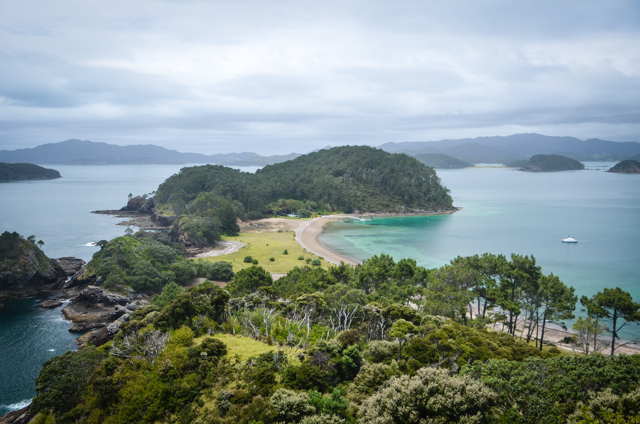
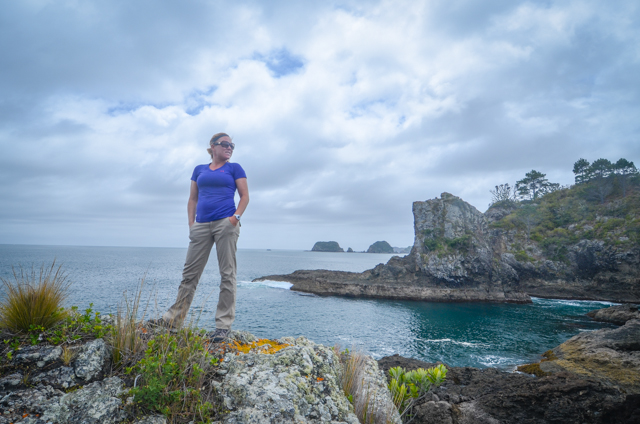
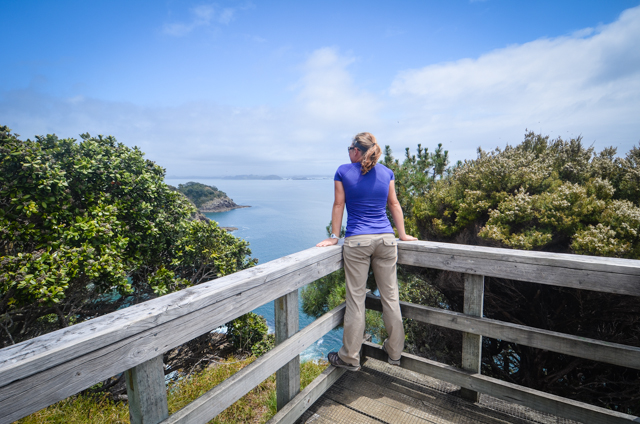
Red shows migration 30,000 years ago; green 3,000; maroon 2,000; and dark blue 1,000 years ago.
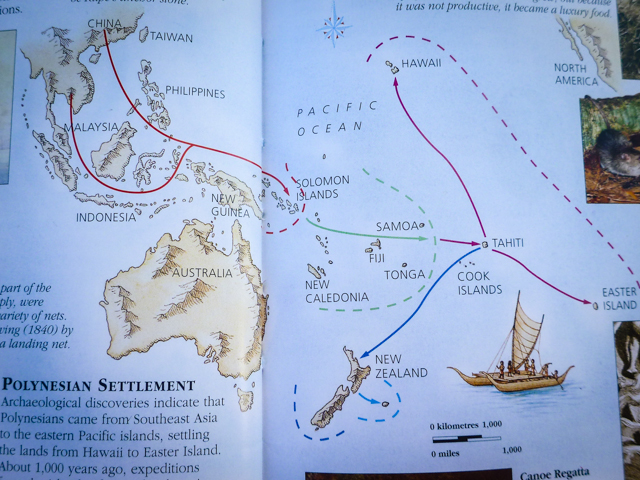
Speaking of primitive, rock oysters are everywhere down here. They cling to almost all rocky seashore you’ll find. Following as the locals do, we pried a few off and brought them home for dinner! I was just hamming it up with the faces; they were slurp-risingly good! Enough butter, lemon, and parmesan make even the most repugnant bivalve delectable!
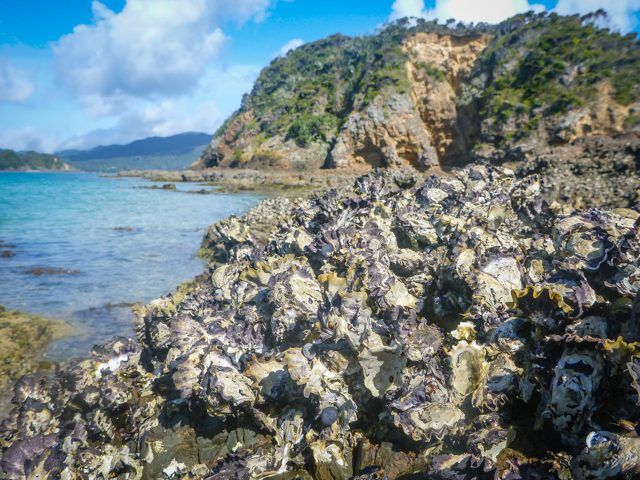
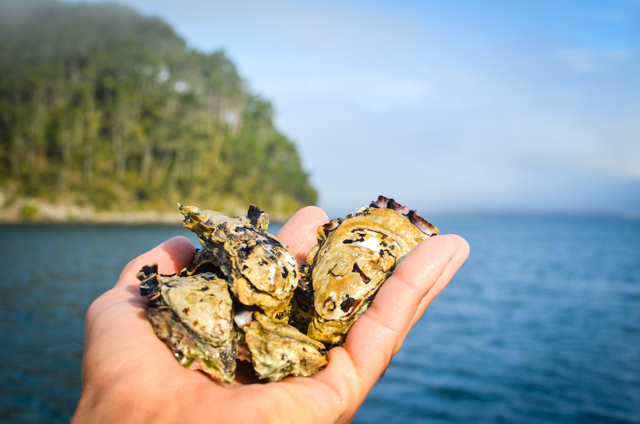
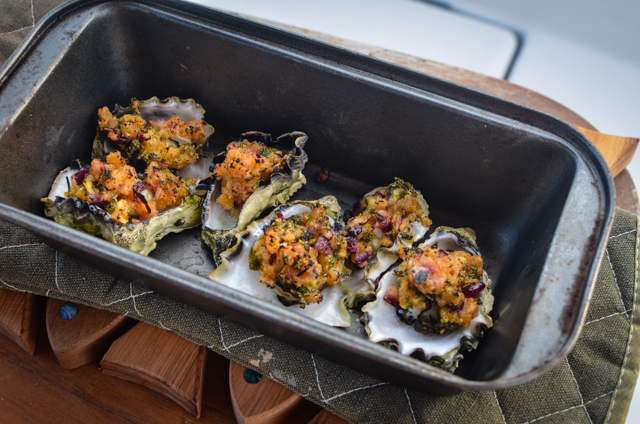
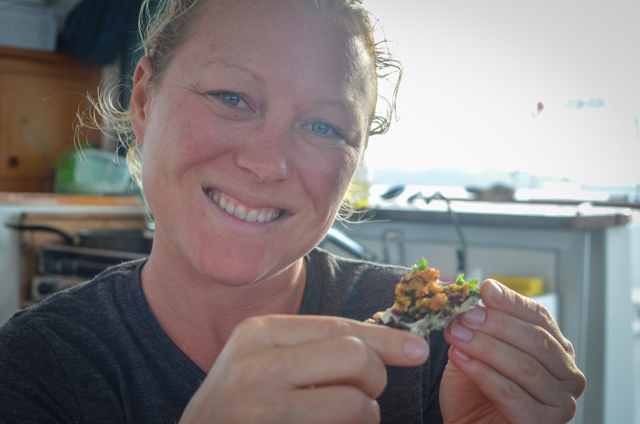
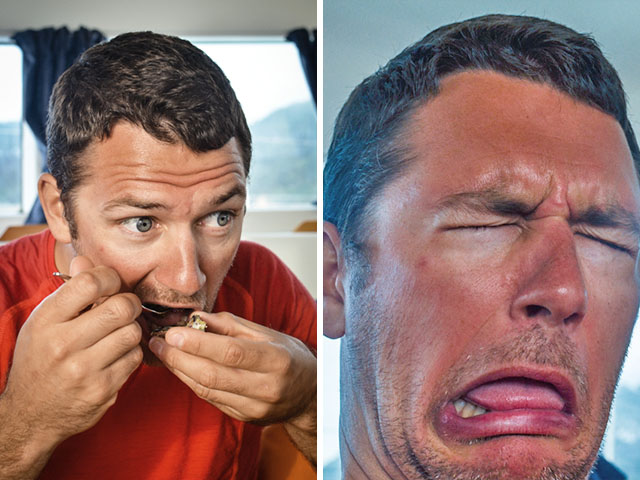
I broke out the heavy suits, hoods, gloves and went to check out the underwater flora and fauna. Lots of kelp, shellfish, and rocks. Reaching down to pick up a cockle shell out of pile, I was startled to see a large monochromatic iris dilate to look at me. The octopus poofed out his skin to make it look spiky and changed from brown to orange. It did the job, and I backed off. In an hour of snorkeling I had seen five of them. I love calamari and liked octopus when I’ve had it before, but I can’t bring myself to catch (read: impale on a harpoon) any of them. I’ve read accounts of them sneaking out of their tanks in captivity to eat fish in other tanks at night, then pop back into their tank and look innocently out in the morning. There’s also account of them ripping the stinging tentacles off jellyfish and using them to hunt their own prey. Don’t just take my word for it, check out Inky’s story. That kind of smarts deserves a pass. Plus they’re scary looking.
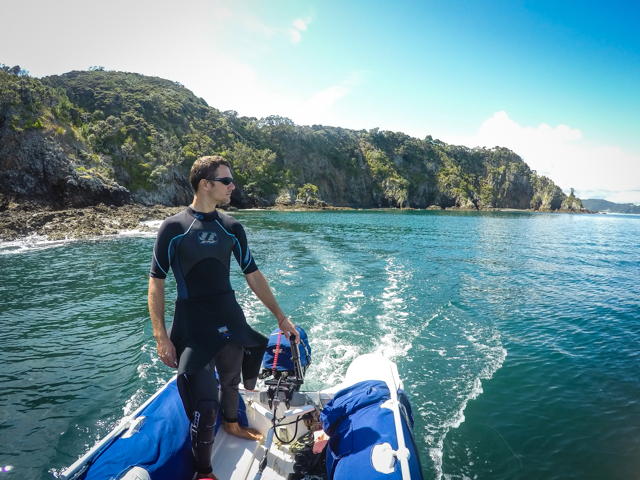
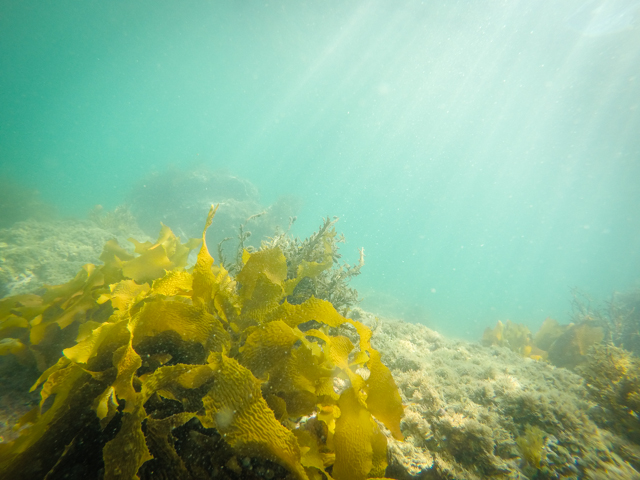
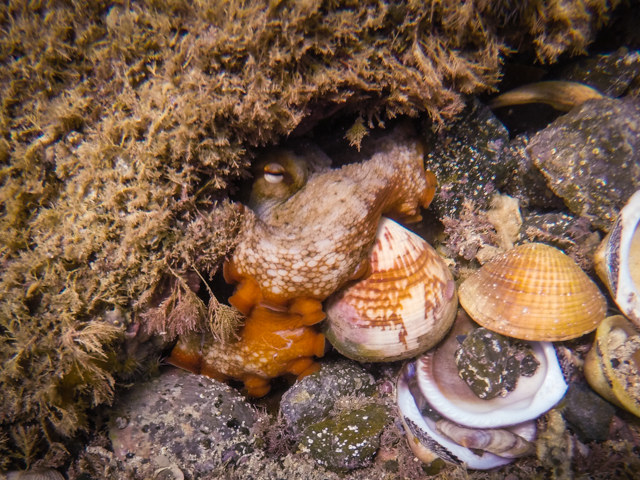
The cold water and warming summer air make for some great fog banks in the mornings. As we sailed three more miles over to Urupukapuka we ran the radar looking for other boats in the mist. Fabulous hiking and a great name? What’s not to like about Urupukapuka?
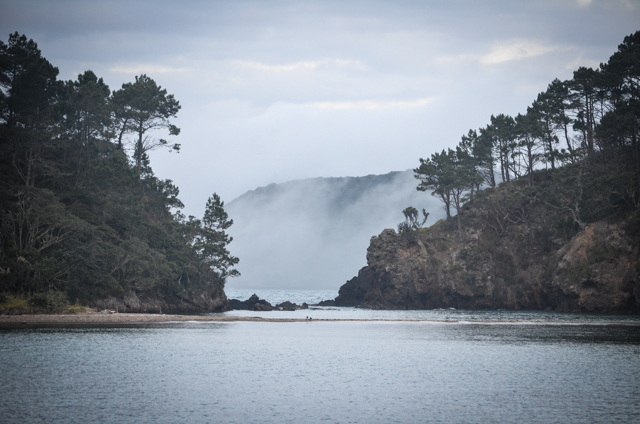
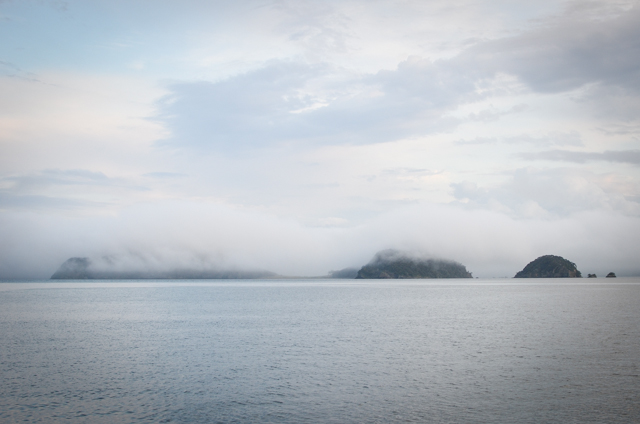
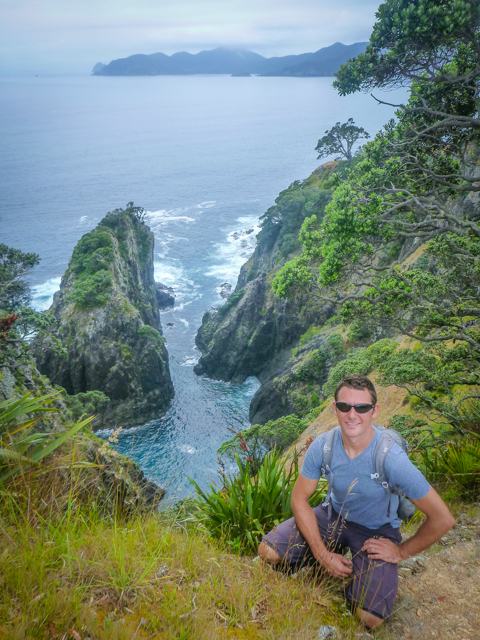

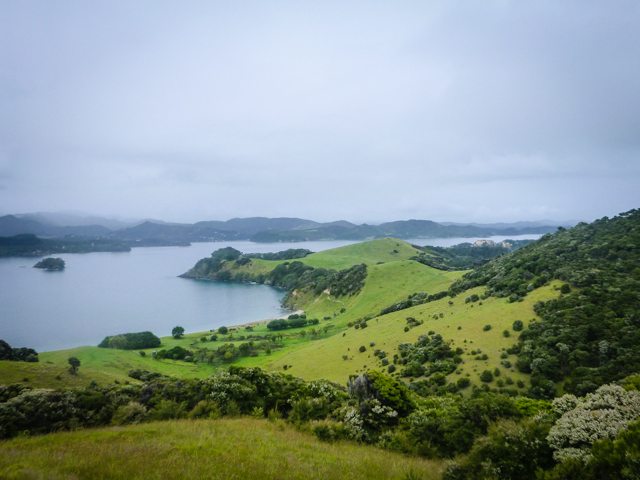
Another thing to love is the scallop beds! In an hour of free diving I gathered a dozen scallops and five green-lipped mussels. They lie in shallow depressions on the bottom with a light covering of silt for camouflage. It’s not too hard to see and pick them up, but they are wilily and open and close rapidly to jump out of your hand and then can actually swim away from you with jets of water! Cleaning them isn’t difficult, though it’s off-putting to have the ones awaiting shucking start clapping and spitting water out of the bucket. “Let me out!” Alas, ’twas not to be. There was ‘streaky bacon’ in the fridge, waiting to be wrapped around the scallops like an octopus tentacle around an unsuspecting wader’s ankle. Into the oven with ye!
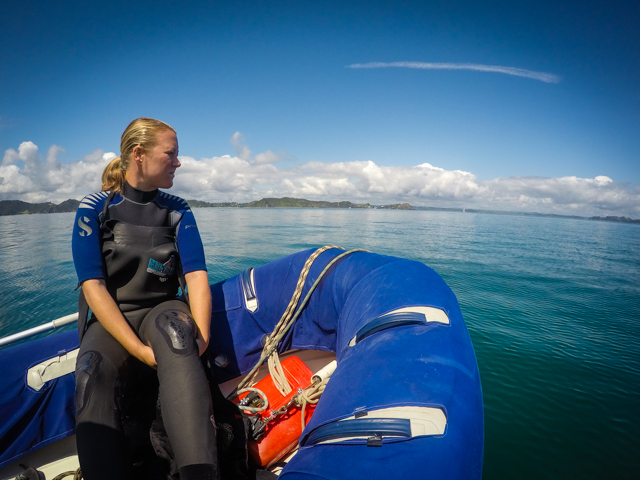
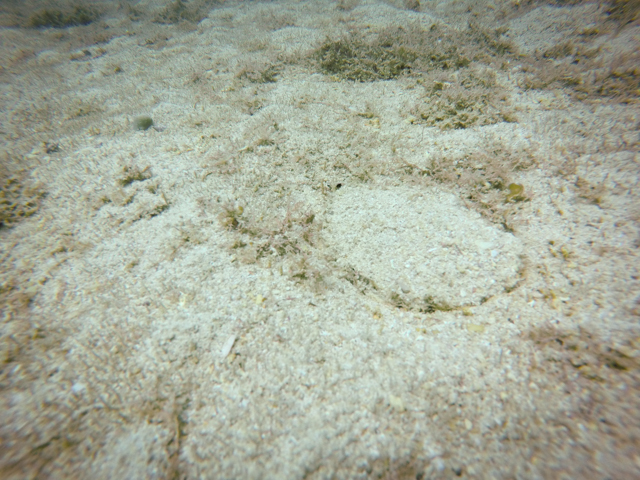
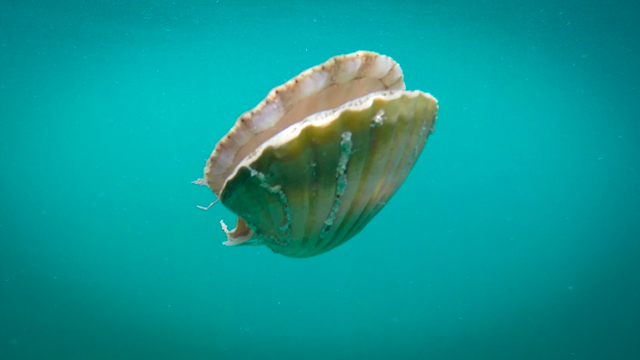
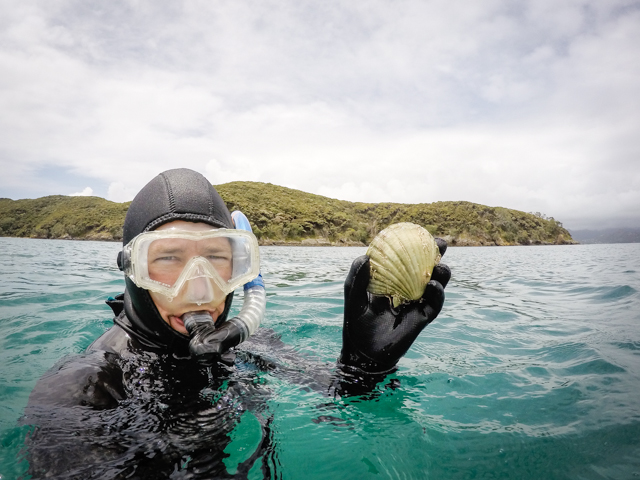
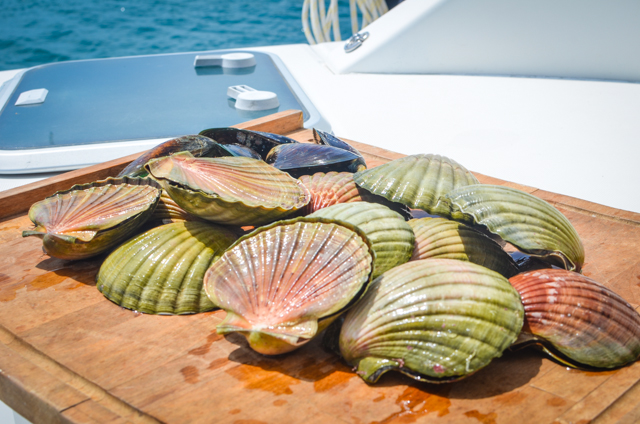
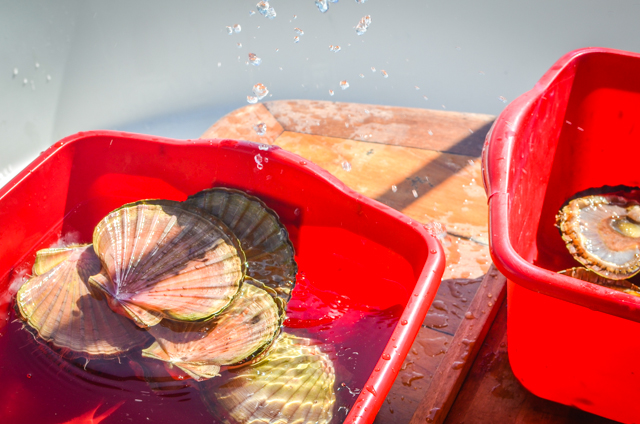
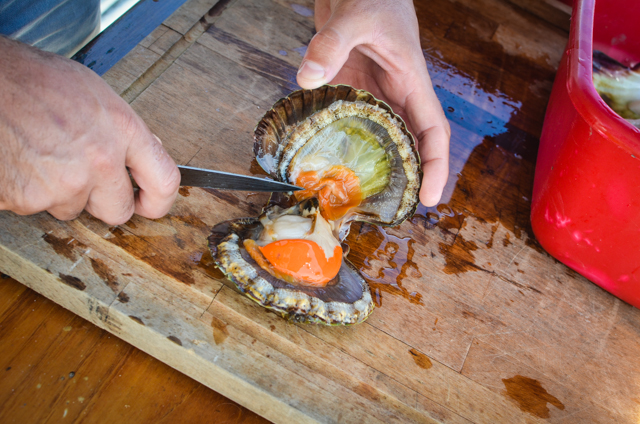
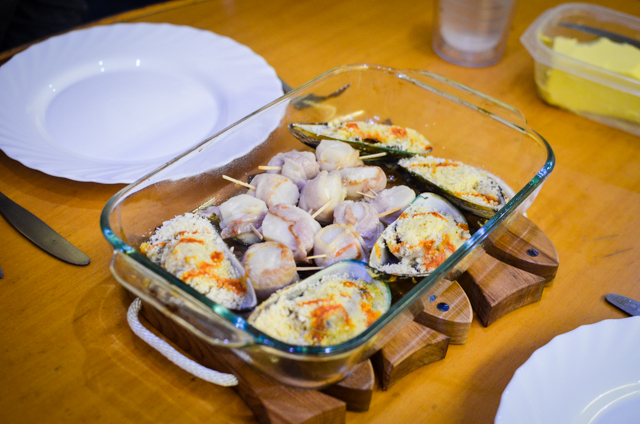
We’re out of the Bay of Islands to run down the coast towards Whangarei as soon as we stop feeling like beached whales and can stand again!



